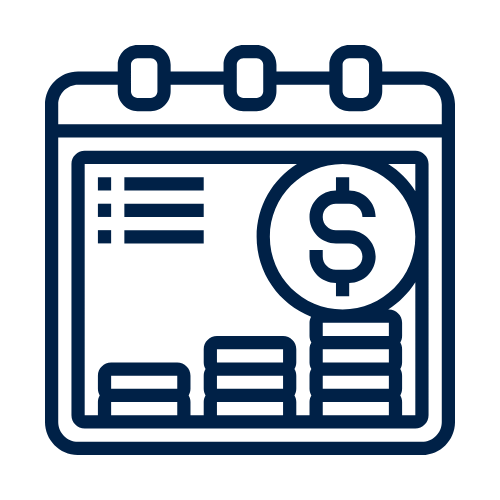Easy Financial Planning Steps You Can Take Right Now
Financial Organization, Planning, Budgeting
Financial planning is an essential part of managing your finances effectively and achieving your financial goals. The journey begins with setting clear goals of what you want to accomplish financially. Whether it’s buying a home, saving for retirement, or paying off debt, we're here to help you make your goals a reality.
What is Financial Planning?
Financial planning is the process of setting goals, evaluating your current financial situation, and creating a strategy to achieve those goals. It encompasses assessing your income, expenses, assets, and liabilities to create a comprehensive plan that aligns with your financial objectives.
Financial planning covers various aspects of your financial life, including retirement planning, investment management, tax planning, estate planning, and risk management. Having a robust financial plan is crucial for attaining financial security and long-term success. It acts as a roadmap to guide your financial decisions and ensures you stay on course to meet your goals.
Financial Planning Benefits:
- Gain a clear understanding of your current financial situation. By analyzing your income, expenses, and debts, you can identify areas to cut costs, increase savings, or eliminate unnecessary debt.
- Helps create a cushion for unexpected events or emergencies. Setting aside funds for emergencies can help you avoid relying on credit cards or loans during challenging times.
- Enables you to make informed financial decisions and identify how to better approach your goals holistically and realistically.
How to Start Your Financial Plan
One of the most important parts of financial planning is simply choosing to start the process. Once you gain momentum with setting healthy financial habits and start tackling your goals one by one, you will have more financial freedom and confidence.
Here are some tips to help you get started:
![]()
Set Goals
Identify short-term goals like building an emergency fund, paying off credit card debt, or saving for a vacation.
Think about long-term goals that take longer to achieve like buying a house, saving for retirement, or funding your child's education.

Be S.M.A.R.T.
Use the SMART framework to ensure your goals are Specific, Measurable, Achievable, Relevant, and Time-bound.
For example: "Save $5,000 for a down payment on a house by December 31."
![]()
Prioritize Goals
Consider which goals are most critical for your financial well-being and start with those goals first.
This will help you stay focused and motivated as you progress towards achieving your financial goals.
Create a Budget
Now that you've identified and prioritized your financial goals, let's talk about creating and keeping a budget. This will allow you to take control of your money and make informed decisions about your spending.
A budget isn't one-size-fits-all, so here are some ways to create a budget that works for you:
1. Track Your Income and Expenses
- Start by calculating your monthly income after taxes. This includes your salary, additional sources of income, and government benefits.
- Next, track your expenses over a month to get a clear picture of where your money is going.
- Categorize your expenses into fixed costs (such as rent or mortgage payments) and variable costs (such as groceries or entertainment).
2. Track and Categorize Your Expenses
- Use a spreadsheet or budgeting software to record your expenses. TowneBank offers Money Management through online banking that can help you track your spending, create budgets, and easily monitor your progress.
- Be diligent in entering each transaction and categorize them accordingly. This will help you identify areas where you may be overspending and allow you to make necessary adjustments.
3. Stick to the Plan
- Once you have created a budget, it's important to stick to it.
- Consider setting financial goals to motivate yourself.
- Automate your savings by setting up automatic transfers to a separate savings account.
- Avoid impulsive purchases by creating a waiting period before buying non-essential items.
- Regularly review and adjust your budget as needed to ensure it remains realistic and effective.
Manage Debt
Now that you've set your goals and created a budget, it's important to also monitor and manage your debt. Understanding the types of debt and their impact on your financial health is crucial for achieving your financial goals.
There are various types of debt, such as credit card debt, student loans, mortgages, and car loans. Each type of debt comes with its own terms and interest rates, significantly affecting your overall financial well-being.
Developing a Repayment Strategy
Developing a way to lower your debt-to-income (DTI) ratio is crucial in gaining control over your finances.
- Start by assessing your current debt situation and determining which debts have the highest interest rates. Prioritizing the repayment of high-interest debts can save you money in the long run.
- Use the 'Avalanche Method,' where you focus on paying off the debt with the highest interest rate first while making minimum payments on other debts. Once the highest-interest debt is paid off, redirect funds towards the next highest-interest debt until all debts are cleared.
- Stick with your budget and make a habit out of only spending what you need with the money you have – not the money you have borrowed.
